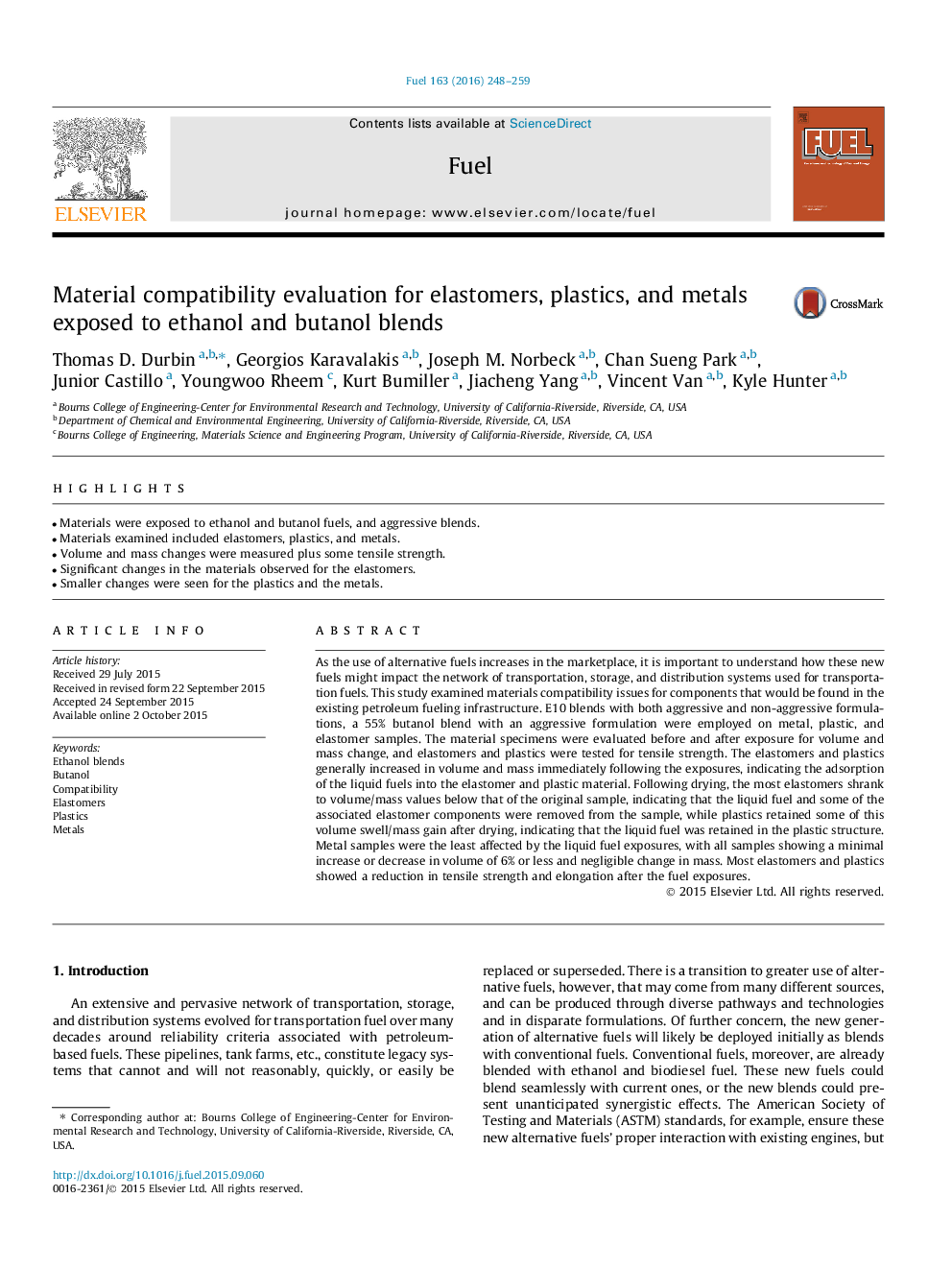| کد مقاله | کد نشریه | سال انتشار | مقاله انگلیسی | نسخه تمام متن |
|---|---|---|---|---|
| 205509 | 461111 | 2016 | 12 صفحه PDF | دانلود رایگان |
• Materials were exposed to ethanol and butanol fuels, and aggressive blends.
• Materials examined included elastomers, plastics, and metals.
• Volume and mass changes were measured plus some tensile strength.
• Significant changes in the materials observed for the elastomers.
• Smaller changes were seen for the plastics and the metals.
As the use of alternative fuels increases in the marketplace, it is important to understand how these new fuels might impact the network of transportation, storage, and distribution systems used for transportation fuels. This study examined materials compatibility issues for components that would be found in the existing petroleum fueling infrastructure. E10 blends with both aggressive and non-aggressive formulations, a 55% butanol blend with an aggressive formulation were employed on metal, plastic, and elastomer samples. The material specimens were evaluated before and after exposure for volume and mass change, and elastomers and plastics were tested for tensile strength. The elastomers and plastics generally increased in volume and mass immediately following the exposures, indicating the adsorption of the liquid fuels into the elastomer and plastic material. Following drying, the most elastomers shrank to volume/mass values below that of the original sample, indicating that the liquid fuel and some of the associated elastomer components were removed from the sample, while plastics retained some of this volume swell/mass gain after drying, indicating that the liquid fuel was retained in the plastic structure. Metal samples were the least affected by the liquid fuel exposures, with all samples showing a minimal increase or decrease in volume of 6% or less and negligible change in mass. Most elastomers and plastics showed a reduction in tensile strength and elongation after the fuel exposures.
Journal: Fuel - Volume 163, 1 January 2016, Pages 248–259
